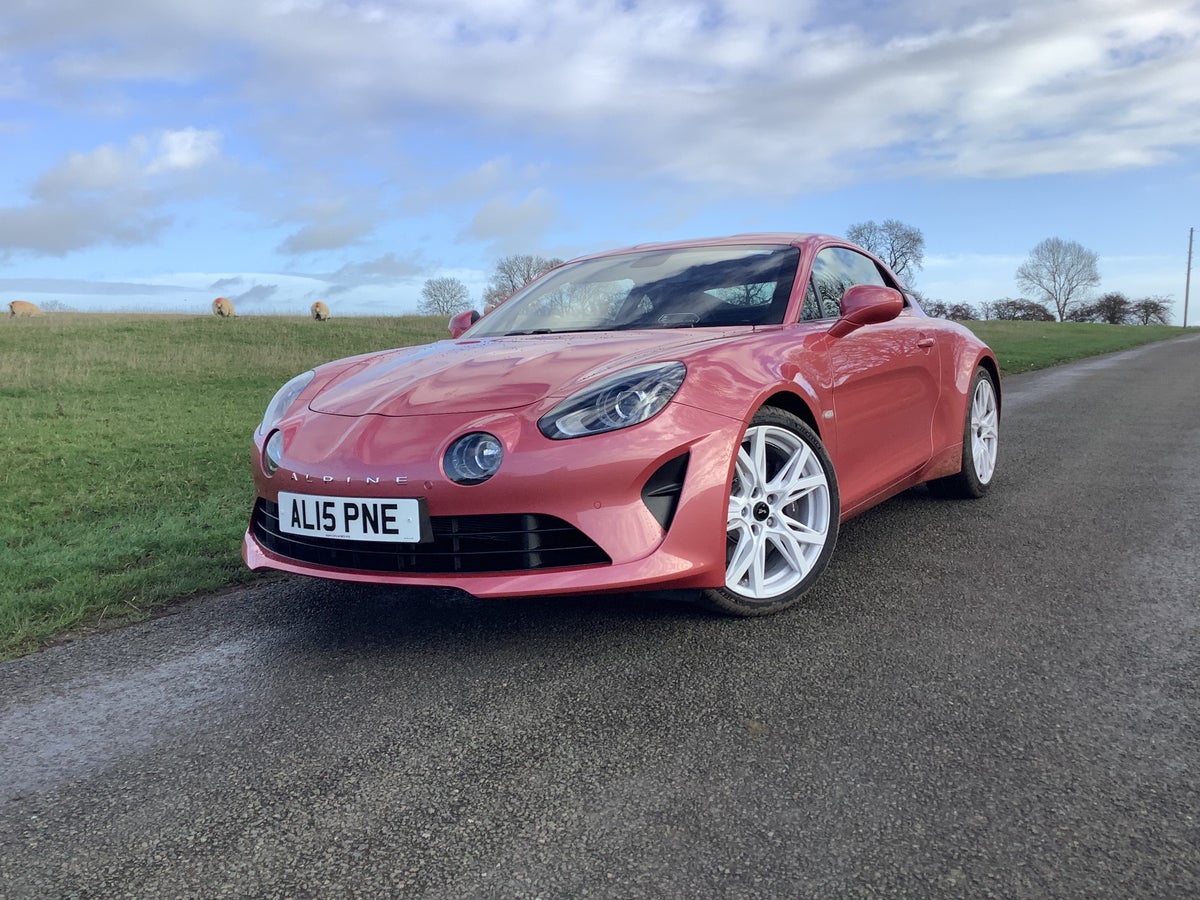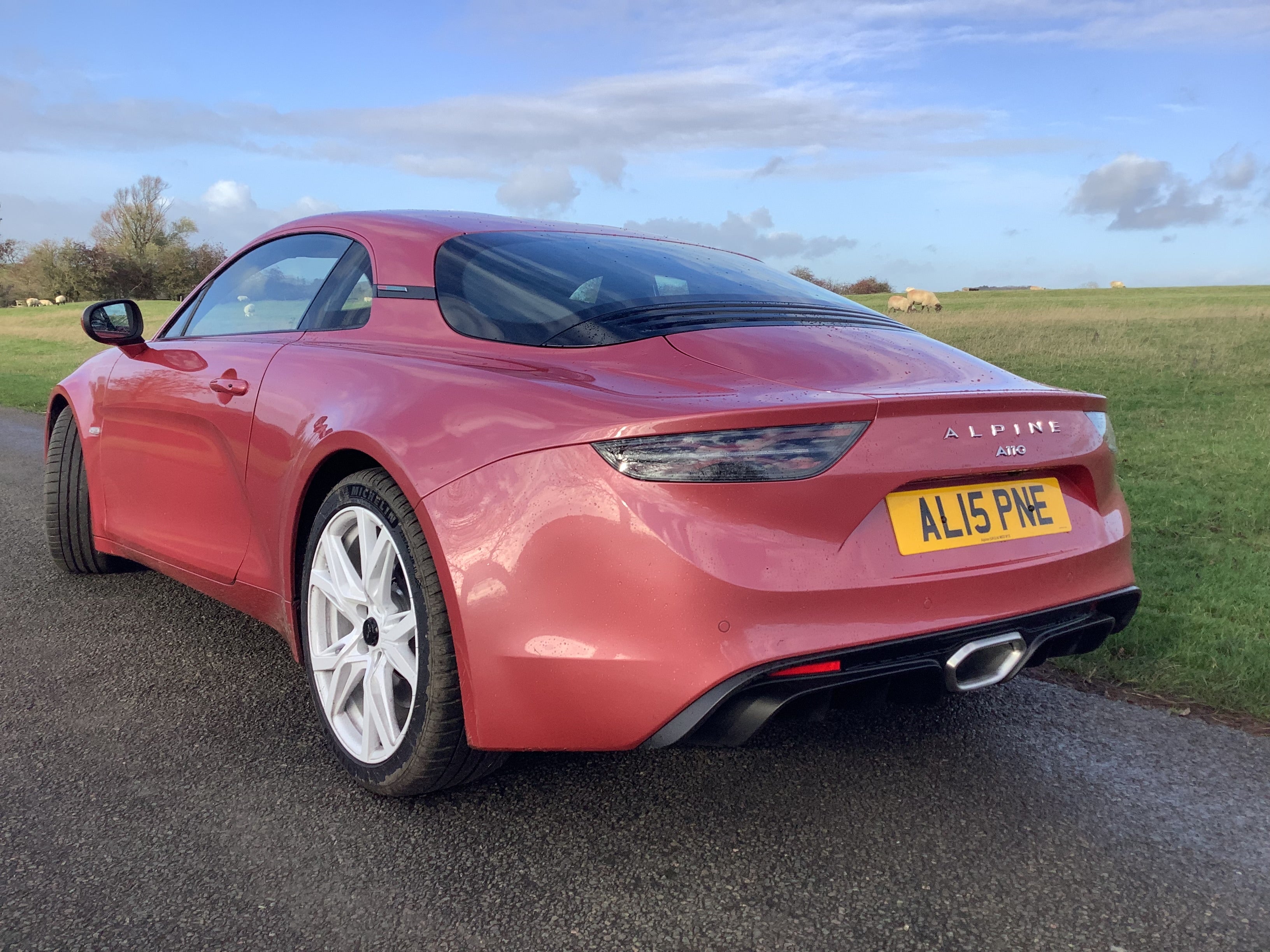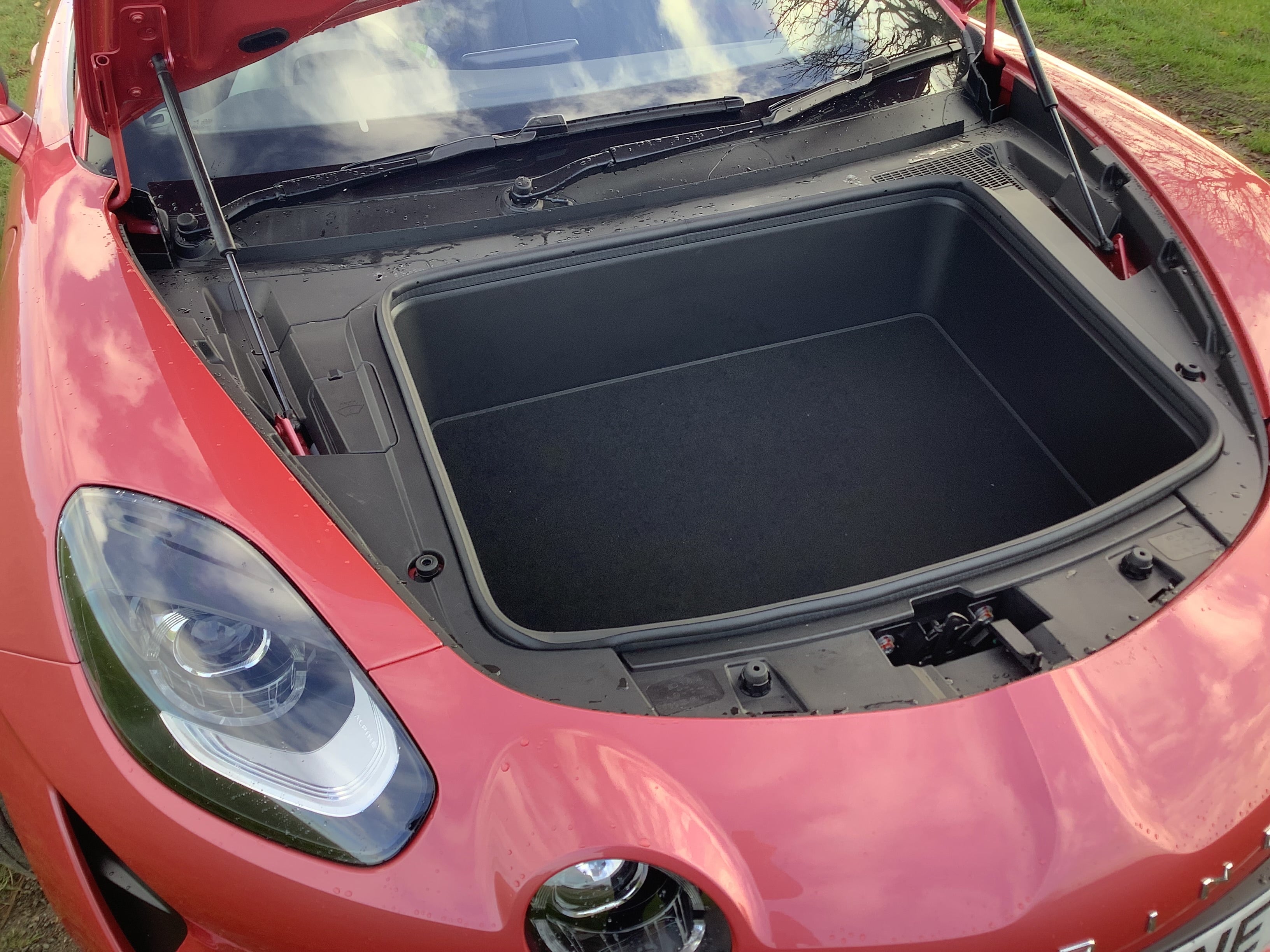
I first drove an Alpine A110 a few years ago, when it was launched, and had fond memories of it. Making its acquaintance again, rather nearer to the end of production of this talented little car, I’m ashamed to say I’d forgotten just how great it is. Even by comparison with the Ferrari Roma that preceded it, the Alpine holds its own – and is arguably the more involving in the hands of your average driver. As good as a Ferrari grand tourer? In its own way, yes.
Full marks for the retro styling, for a start. It’s a conscious, even self-conscious, echo of a 1960s original, when it was known as a Renault, and it still works well. It avoids being too much of a pastiche. It’s rear-drive and mid/rear-engined, which means it can sit low and have a slim, racy bonnet line. Some “fins” in the side panels add to the classic appeal, and the fact that it’s quite compact by modern standards (4.2 metres long by 1.8 wide) just makes it seem that much more authentic, a throwback to the pre-SUV age.
Usually, it’s chosen in a nice shade of traditional French racing blue, but for this latest “South Beach Colorway” special edition, a kind of Miami vibe, they’ve gone for a “Heather Pink” paintwork choice, complimented with glossy white alloy wheels and pink highlights around the interior. If you gave your hair a rosy rinse and wore some white stilettos, 1980s style, you could quite happily colour-coordinate with your sports car. I didn’t like the Alpine enough to do that, however.
Best of all, it’s a sublime drive. The cute looks don’t really prepare you for its quite muscular ways, and it’s an energetic and energising machine, very much in the best traditions of the sports car. It’s been compared with a latter-day Lotus, indeed, because the philosophy behind the Alpine’s construction is very much aligned with pioneer Colin Chapman at Lotus: “just add lightness”.
THE SPEC
Alpine A110 South Beach
Price: £56,368 (as tested, starts at £47,545)
Engine capacity: 1.8l petrol, 7sp auto, RWD
Power output (hp): 252
Top speed (mph): 155
0 to 60 (seconds): 4.5
Fuel economy (mpg): 40.4
CO2 emissions (WLTP, g/km): 158
The bodywork is all-aluminium, for example, and there’s not much of it anyway. Nor is there much of a car indoors. It’s a strict two-seater, because the 1.8-litre turbocharged engine is where the back seats might be – adding greatly to the wonderfully burbly, gargly appeal of the engine note, enhanced as it is with a sports exhaust. It’s fairly tight in there, in the hugging Sabelt seats, with the seat-belt catch jammed hard down the side. It will accommodate the larger-boned, but it’s a low-slung car, and there’s not much room for luggage anywhere. Miniature compartments in the bonnet and at the rear behind the engine are sufficient for a couple of overnight bags.
Not that you’d be much concerned about practicality as you press on in this surprisingly fast and agile car, the motor and double-clutch automatic gearbox always responsive, especially when you push the red fun button next to the steering wheel marked “sport”. It handles fairly tidily, but always remember that this is a rear-drive machine with a fair bit of its weight towards the back, so the tail will slip out a little from time to time – just enough to be “entertaining”. The Alpine may not have the prestige of a Porsche Cayman or the quality of an Audi TT, but it’s as good as any of its rivals to drive, and it’s different, and some of us like that.


The only bits of the car that you’d actually call dated rather than charmingly retro are the small touchscreen and the pod behind the steering wheel for the radio controls, albeit a great French tradition in itself.
Now in its fifth year of production, the Alpine may not have that much longer to go, though it does have a pretty devoted cult following, including in Japan, as I found when I Tweeted an image of the new novelty colour scheme (also available in “Azure Bleu”). The next Alpines, according to owner Renault, will be electric, which is inevitable one supposes, but if it lives up to the Alpines of the past and present it will still be a wonderful, desirable thing. Instant classics, all of ’em.







